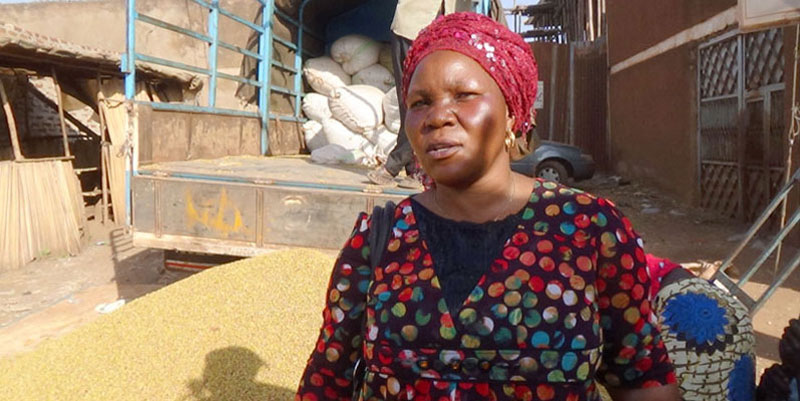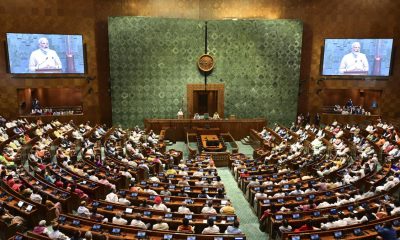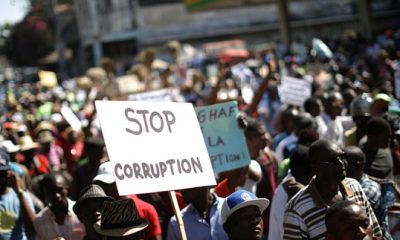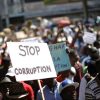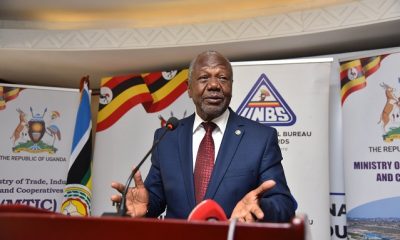Analysis
Maize Jokes: Why government plan won’t work
9 Reasons why Gov’t Plan on Maize is Ill-Thought and Unworkable
A maize trader in BusiaThe government has exposed itself to ridicule by suggesting that it will lend traders up to UGX100bn for buying maize and still determine the price.
In a news conference held at the Uganda Media Centre on Wednesday August 8th 2018, Finance Minister Matia Kasaija said that government will guarantee borrowers to access money from the Agricultural Credit Facility that is managed by Bank of Uganda together with commercial banks, to enable them access capital.
The move was in itself a step backwards from its earlier commitment to provide some UGX250 billion to farmers by buying 500,000 metric tones of maize at UGX500 a kilo.
1. Too little too late
The government says that it will guarantee borrowers up to UGX20bn to buy maize from farmers at a minimum of UGX500 per kilo using funds from the ACF. This effectively means that just 5 traders can exhaust the entire government offer if it receives bids worth UGX20bn each. Because banks share the risk of lending the money, the claim by the Minister Kasaija that banks can disburse loans within two weeks, is not realistic as banks have to carry out their own due diligence on the borrower to ensure he/she has the ability to pay back. The proposed solution to the current maize glut therefore appears to be coming rather late as its implementation will require some time.
2. No mechanism to enforce UGX500/kg tag
The assertion that traders will buy maize at UGX500 per kilo, appears to be misleading and misplaced. This is because government cannot impose a price on people’s ‘own’ money. Different factors including the state of roads, distance between farmer and the market, means that traders can charge at the price of their choice. And the reverse is true for farmers in Kasese, Kapchorwa and such border districts in Eastern Uganda who are near the lucrative markets. These farmers can sell at a much higher price than the UGX500 that the government seems to be dictating.
3. Lack of storage
Favourable rains that were received last year enabled hundreds of farmers across the country to harvest the crop in good quantities. The challenge however is that the country lacks any storage facilities to talk of, to ensure that farmers are able to keep produce for longer so that prices improve.
The Ministry of Finance says that Uganda produced 4.6million tones of maize last year. This years favourable rains mean that output will greatly exceed 4.6m tonnes. The situation is being made worse by the fact that Kenya, which is Uganda’s biggest maize buyer, also experienced plentiful, and thus has a smaller gap to fill.
At the same time the ministry of finance says that the current storage capacity by members of the Uganda grain council as well as cooperatives remains at 920,500 or about only 20% of the 2017 production. This means that this year’s potentially record maize output is suffering from lack of storage hence the low prices.
4. ‘Stinking’ Poverty
Hundreds of farmers across the country have been forced to sell their maize at laughable prices not out of their choice but due to pressing demands such as school fees. In many parts of the country, maize has become a commercial enterprise in which households invest money and hope. With the school term about to come to a close, parents are under unprecedented pressure from schools to clear their children’s fees. This has greatly forced farmers to sell off their produce at give-away prices to solve such problems.
5. Debts
Closely related to pressing family needs, is that a number of farmers these days take out loans from financial institutions to invest in maize growing and they stake their valuable assets. The money is used to rent land, pay for labourers, purchase seed etcetera. Banks cannot listen to arguments from farmers that they are unable to pay back because prices are low. Testimonies from a number of farmers The Sunrise has spoken to indicate that farmers would rather sell at stupid prices just so they can recover something and take back banks’ money.
6. Higher cost of Fuel and transportion
The current low prices have to some degree been brought about by the increased cost of buying and transporting maize by traders from the farmer to the market. Uganda’s biggest maize markets are located at the border areas of Kasese and Busia and on the Uganda Sudan border.
According to Ramathan Kayiwa, a maize trader from Mubende, the cost of fuel, that was brought about by the UGX200 hike in the exercise duty on fuel in the current budget, has increased the cost of transporting the produce to the markets.
“In order for us to be able to cover the increase in the cost of transportation, we have to buy at lower prices than normal. This is made worse by the low demand for maize from the buyers,” said Kayiwa.
7. Maize Tax
During the reading of the budget, Minister Kasaija announced a new tax on the export of maize, wheat. According to Kayiwa, the tax started to bite on July 1, 2018. He says that the government charges UGX112 for every kilogram of maize exported. For traders to be able to maintain their financial positions, they have to push this cost onto the farmer through inferior prices.
8. Lack of money not the problem
The proposal by the government to dangle money to borrowers, is another excuse from the government as traders can and have always invested in this industry without any incentives. The challenge now appears to be that the government lacks the infrastructure to suck out the excess output so that it can be released gradually, as supplies reduce.
9.Poor Coordination
Lack of Coordination between agriculture and trade dockets. The lack of coordination between the ministries of trade and agriculture has played out in the contradicting statements. While appearing on the floor of Parliament, Trade Minister Amelia Kyambadde confirmed government would buy some 500,000tones of maize at UGX500 a kilo. This position changed a few days after when government said it would work with World Food Program and Cooperatives to buy the maize.
The failure by the government to rehabilitate and empower producer cooperatives, whose members are farmers, has led to the collapse of storage infrastructure.
The sad state of affairs has been attributed to bad governance by some politicians, such as Nakaseke MP Luttamaguzi Ssemakula who wondered quipped thus: “Unless people start voting wisely and they get to know the kind of people they vote into offices who will always be there for them, they will continue to cry.”
Comments



